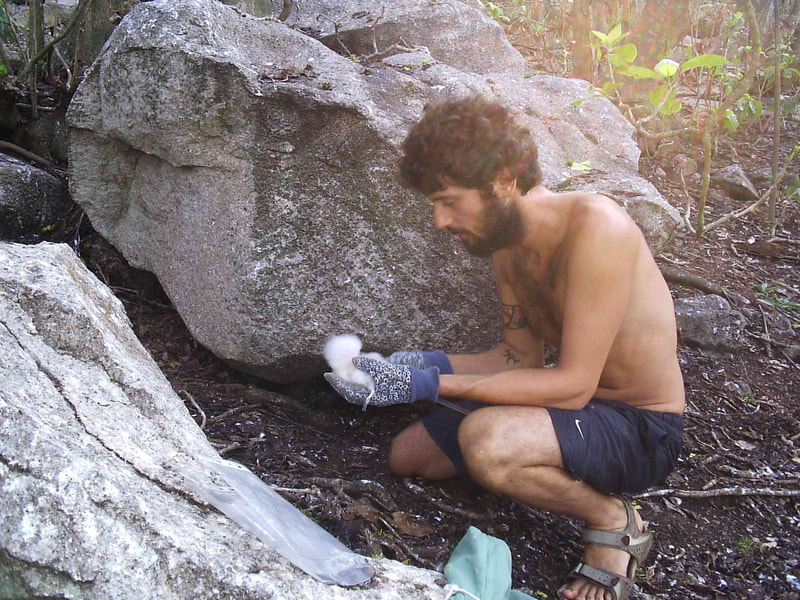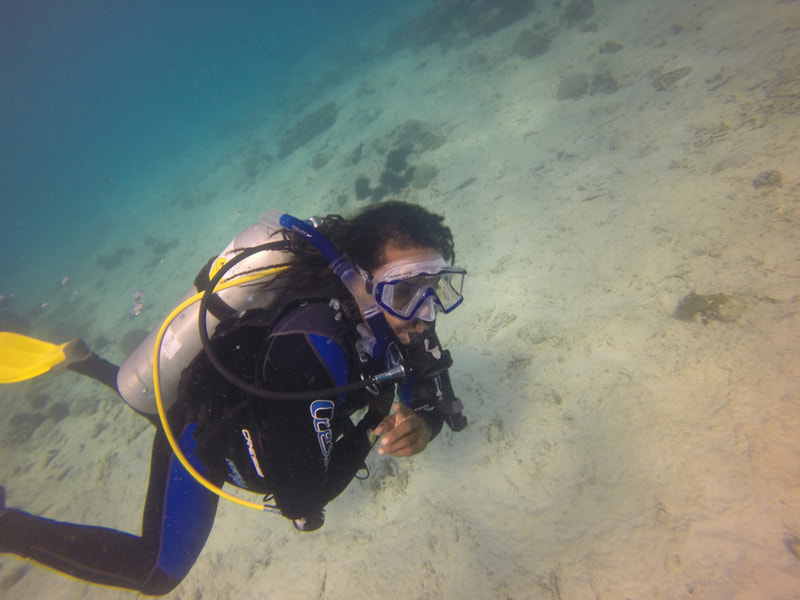Monitoring & Research
Aride has an exceptionally long history of research, monitoring and conservation management. Biological surveys were carried out in the 1970s, followed over the years by many more scientific papers as well as the detailed articles on research and conservation projects. Bird and vegetation monitoring have been especially well-covered and are the longest such programmes of any island in Seychelles. Turtle monitoring has been carried out for more than four decades. Research is conducted or assisted by staff and volunteers in collaboration with a range of conservation bodies, universities and research institutes, overseen by the Aride Advisory Committee (AAC). Seychelles Warbler, Roseate Tern, White-tailed Tropicbird and seabird foraging areas have been the subjects of significant research projects.
|
Research Priorities:
1. Seabirds Decline & Causes: The highest research and conservation priority is the recorded decline of Aride’s seabird populations, the most important aspect of its biodiversity. Fairy Terns and White-tailed Tropicbirds may have declined for three decades whereas for other species it is a more recent phenomenon. Woodland encroachment may partly or largely explain loss of Sooty and Roseate Terns, but the other species should not be so affected and the across the board picture is alarming.
2. Pisonia Pan-tropical Genetics & Ecology: A long-term research project investigating the relationships between Indian Ocean and Pacific forms, comparing fruiting patterns and seabird impacts will produce recommendations for management. 3. House Mouse Diet & Eradication Feasibility & Impact Studies: With reference to potential seabird predation and future eradication. 4. Habitats Maps: Aride does not have an accurate terrestrial habitats map. Terrestrial and marine habitats maps are a priority. |
Monitoring Activities
Monitoring makes up the core of the work of ICS staff on Aride. Current priorities include:
- Weather: Manual recording of the weather data has been undertaken daily since 1984. This information contributes to a very substantial and carefully collected data set and every effort is made to ensure its continuity at a high standard.
- Beach Patrols: Between three and five beach patrols are undertaken daily during the main Hawksbill Turtle breeding season from September to March.
- Seychelles Magpie-robin: All five land bird endemic of Aride are monitored, especially, the island’s small Seychelles Magpie-robin population: birds are colour-ringed to enable identification and breeding attempts monitored.
- Seabirds: Fairy Tern, White-tailed Tropicbird and some shearwaters breed year-round and Aride has globally or regionally important populations of all of these species. Breeding success at selected nest sites is monitored weekly, to help understand patterns and trends.
- Mortality Due to Pisonia: Pisonia is a native tree and its horizontal branches provide nesting sites for seabirds. However, its sticky seeds can entangle birds that are then unable to fly and die. Should man interfere with a natural process or is this vital in view of the decline in seabird numbers? Opinions are divided.
- Frigatebirds: A monthly count is made of the huge number of frigatebirds. Numbers tend to peak in October to December, mainly Great Frigatebirds, but the proportion of Lesser to Great is higher during April to July.
- Terrestrial & Freshwater Reptiles: Population size and/or density is monitored with the aim that there should be no decline in populations of native species.
- Plant Phenology: Plant phenology is the study of periodic events such as flowering and how these are influenced by climate and habitat factors. Notably on Aride, this includes Pisonia and Wright’s Gardenia.
- Annual Seabird Census: This takes place over 4-5 days during the main seabird breeding season (usually in June or early July). Around the same time, there are surveys of Lesser Noddy, Brown Noddy, Sooty Tern and Roseate Tern breeding success.
- Marine Life: Monitoring is carried out with the aim there should be no decline in numbers & diversity of reef fish and other marine life and no reduction in coral cover. Opportunistic sightings of marine mammals are logged.
- Invertebrates: The density and distribution of key species and group are monitored and soil, leaf and leaf-litter invertebrates sampled.
- Migrants and Vagrants: Records of rare migrant bird species are logged and submitted to Seychelles Bird Records Committee for assessment and confirmation.











